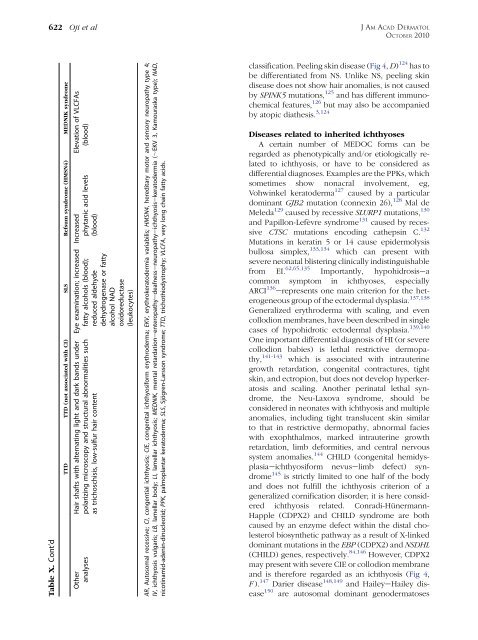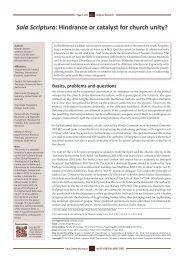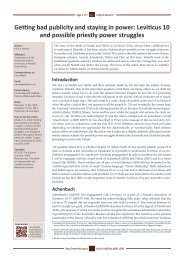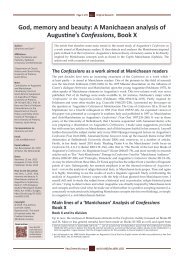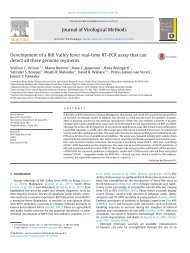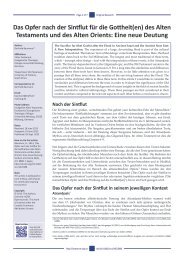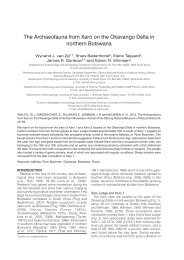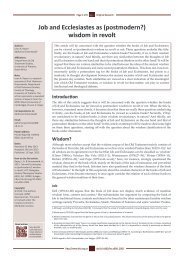Revised nomenclature and classification of inherited ichthyoses ...
Revised nomenclature and classification of inherited ichthyoses ...
Revised nomenclature and classification of inherited ichthyoses ...
You also want an ePaper? Increase the reach of your titles
YUMPU automatically turns print PDFs into web optimized ePapers that Google loves.
622 Oji et al<br />
Table X. Cont’d<br />
TTD TTD (not associated with CI) SLS Refsum syndrome (HMSN4) MEDNIK syndrome<br />
Elevation <strong>of</strong> VLCFAs<br />
(blood)<br />
Increased<br />
phytanic acid levels<br />
(blood)<br />
Eye examination; increased<br />
fatty alcohols (blood);<br />
reduced aldehyde<br />
dehydrogenase or fatty<br />
alcohol NAD<br />
oxidoreductase<br />
(leukocytes)<br />
Hair shafts with alternating light <strong>and</strong> dark b<strong>and</strong>s under<br />
polarizing microscopy <strong>and</strong> structural abnormalities such<br />
as trichoschisis, low-sulfur hair content<br />
Other<br />
analyses<br />
AR, Autosomal recessive; CI, congential ichthyosis; CIE, congenital ichthyosiform erythroderma; EKV, erythrokeratodermia variabilis; HMSN4, hereditary motor <strong>and</strong> sensory neuropathy type 4;<br />
IV, ichthyosis vulgaris; LB, lamellar body; LI, lamellar ichthyosis; MEDNIK, mental retardationeenteropathyedeafnesseneuropathyeichthyosisekeratodermia (;EKV 3, Kamouraska type); NAD,<br />
nicotinamid-adenin-dinucleotid; PPK, palmoplantar keratoderma; SLS, Sjögren-Larsson syndrome; TTD, trichothiodystrophy; VLCFA, very long chain fatty acids.<br />
<strong>classification</strong>. Peeling skin disease (Fig 4, D) 124 has to<br />
be differentiated from NS. Unlike NS, peeling skin<br />
disease does not show hair anomalies, is not caused<br />
by SPINK5 mutations, 125 <strong>and</strong> has different immunochemical<br />
features, 126 but may also be accompanied<br />
by atopic diathesis. 3,124<br />
Diseases related to <strong>inherited</strong> <strong>ichthyoses</strong><br />
A certain number <strong>of</strong> MEDOC forms can be<br />
regarded as phenotypically <strong>and</strong>/or etiologically related<br />
to ichthyosis, or have to be considered as<br />
differential diagnoses. Examples are the PPKs, which<br />
sometimes show nonacral involvement, eg,<br />
Vohwinkel keratoderma 127 caused by a particular<br />
dominant GJB2 mutation (connexin 26), 128 Mal de<br />
Meleda 129 caused by recessive SLURP1 mutations, 130<br />
<strong>and</strong> Papillon-Lefèvre syndrome 131 caused by recessive<br />
CTSC mutations encoding cathepsin C. 132<br />
Mutations in keratin 5 or 14 cause epidermolysis<br />
bullosa simplex, 133,134 which can present with<br />
severe neonatal blistering clinically indistinguishable<br />
from EI. 62,65,135<br />
JAM ACAD DERMATOL<br />
OCTOBER 2010<br />
Importantly, hypohidrosisea<br />
common symptom in <strong>ichthyoses</strong>, especially<br />
ARCI 136 erepresents one main criterion for the heterogeneous<br />
group <strong>of</strong> the ectodermal dysplasia. 137,138<br />
Generalized erythroderma with scaling, <strong>and</strong> even<br />
collodion membranes, have been described in single<br />
cases <strong>of</strong> hypohidrotic ectodermal dysplasia. 139,140<br />
One important differential diagnosis <strong>of</strong> HI (or severe<br />
collodion babies) is lethal restrictive dermopathy,<br />
141-143 which is associated with intrauterine<br />
growth retardation, congenital contractures, tight<br />
skin, <strong>and</strong> ectropion, but does not develop hyperkeratosis<br />
<strong>and</strong> scaling. Another perinatal lethal syndrome,<br />
the Neu-Laxova syndrome, should be<br />
considered in neonates with ichthyosis <strong>and</strong> multiple<br />
anomalies, including tight translucent skin similar<br />
to that in restrictive dermopathy, abnormal facies<br />
with exophthalmos, marked intrauterine growth<br />
retardation, limb deformities, <strong>and</strong> central nervous<br />
system anomalies. 144 CHILD (congenital hemidysplasiaeichthyosiform<br />
nevuselimb defect) syndrome<br />
145 is strictly limited to one half <strong>of</strong> the body<br />
<strong>and</strong> does not fulfill the ichthyosis criterion <strong>of</strong> a<br />
generalized cornification disorder; it is here considered<br />
ichthyosis related. Conradi-Hünermann-<br />
Happle (CDPX2) <strong>and</strong> CHILD syndrome are both<br />
caused by an enzyme defect within the distal cholesterol<br />
biosynthetic pathway as a result <strong>of</strong> X-linked<br />
dominant mutations in the EBP (CDPX2) <strong>and</strong> NSDHL<br />
(CHILD) genes, respectively. 84,146 However, CDPX2<br />
may present with severe CIE or collodion membrane<br />
<strong>and</strong> is therefore regarded as an ichthyosis (Fig 4,<br />
F ). 147 Darier disease 148,149 <strong>and</strong> HaileyeHailey disease<br />
150 are autosomal dominant genodermatoses


